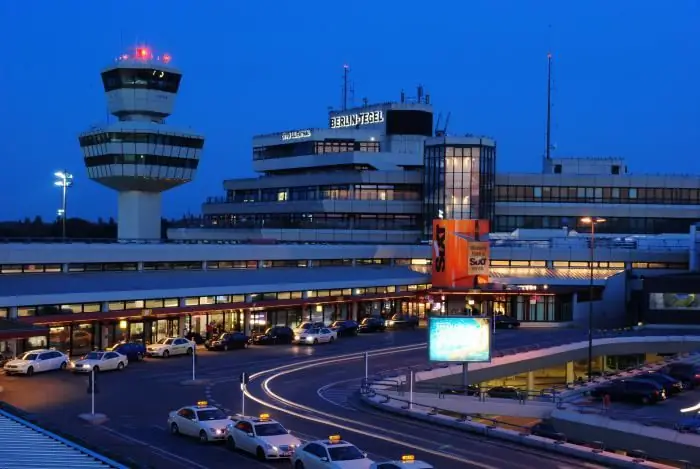- Author Harold Hamphrey [email protected].
- Public 2023-12-17 10:06.
- Last modified 2025-01-24 11:10.
Berlin's underground, also referred to as the U-Bahn (which means "underground railway", from the word Untergrundbahn), is one of the oldest in Europe. It opened in 1902 and currently serves 170 stations, which are divided into ten branches with a total length of 151.7 kilometers. Approximately 80% of the Berlin underground railway track is hidden under the ground.

During the year, this system serves more than 400 million passengers, so, in 2012, 507,300,000 passengers used the U-Bahn. The daily passenger turnover of the metro is about 1,400,000 people. It is managed, repaired and maintained by the largest municipal transport company Berliner Verkehrsbetriebe, better known by the abbreviation BVG.
Convenience of the system
The frequency of the movement of trains has an interval of 2.5 minutes during peak hours on weekdays and five minutes during the rest of the daytime. In the evening, trains arrive every 10 minutes. There is also a schedule for the night period of the day.

The main transport of the capital is the Berlin metro. The scheme is closely intertwined with the complex of city trains - S-Bahn. Therefore, the citizens and guests of the cityhave the ability to quickly and comfortably get to any place you need.
History
Berlin was the first city in Germany to build a subway and the fifth in Europe after London, Budapest, Glasgow and Paris. Werner von Siemens, a well-known German engineer and inventor, played an important role in the creation of the transport complex. It was he who came up with the idea of building an underground train network to solve the growing transport problems in the German capital at the end of the 19th century.
The first subway line was built and launched in 1902 after a long period of planning and project discussion. The line passed above the ground and in many respects repeated the technical solutions of the New York elevated railroad tracks. In subsequent years, the number of branches of the Berlin metro grew. The scheme by the beginning of the First World War had four directions.
Further planning for the construction of underground infrastructure was aimed at connecting the capital and its districts: Wedding, which was located in the northern part, with Tempelhof and Neukölln, located in the south. These works began in December 1912 and were greatly delayed until 1930 due to the war and the emergence of a mass of financial difficulties.
State under the National Socialists
When the NSDAP came to power in 1933, Germany changed a lot. These changes also affected the Berlin underground. Nazi flags were displayed at all stations, and two points were renamed in honor of the heroes of the new regime. Architect Speer has developed an ambitious project for the expansion of the Berlin metro. The scheme provided for the creationa circle line that would link other branches to each other.
During World War II, the stations were used as bomb shelters. Infrastructure was often subject to destruction, some of which could be quickly repaired. But constant fighting prevented the damage from being completely restored. Despite this, train traffic continued until the end of hostilities.
Only at the end of April 1945 did the Berlin metro stop temporarily. The scheme of the tunnels indicated that they were flooded, the power supply was cut off. However, a month later, part of the tracks was again brought into working condition. A great merit in this belongs to the commandant of the city N. E. Berzarin.
Soviet times
The most important event in the life of the city was its division into two parts. A restriction was introduced on the movement of citizens from west to east and vice versa. The famous Berlin Wall was erected - a fence dividing the space into two parts. This brought a lot of difficulties in the operation of the subway.

Modernity
Today, the Berlin underground has 10 lines - 9 main and one auxiliary. The network has a huge length and covers the area not only of the city itself, but also of the nearest suburbs. For tourists, there is a Berlin metro map with attractions for sale. Thanks to this, guests of the capital can travel without fear of getting lost and see all the interesting objects.






